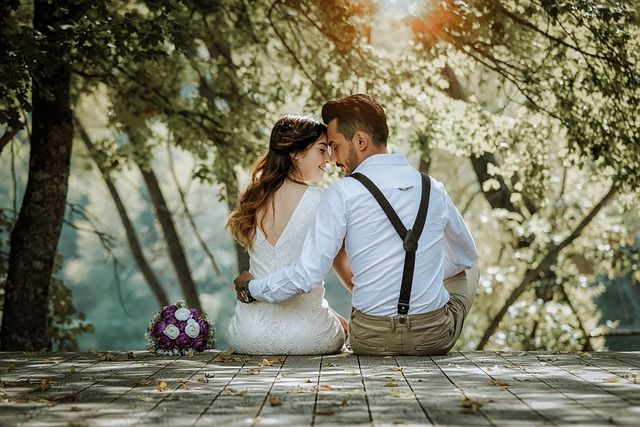Top 7 things to do on your holiday in Brazil for a memorable vacation
Share
| Table of Contents | |
|---|---|
| 1. Christo Redentor and Corcovado, Rio di Janerio | |
| 2. Visit to Sugar Loaf Rio Di Janeiro | |
| 3. Experience Copacabana, Rio de Janeiro | |
| 4. Beautiful Beaches of Ipanema | |
| 5. Discover the Historic City of Salvador | |
Brazil covers over half of South America. The majority of it is located in the tropics and contains a wide variety of exotic flora and animals unique to the Southern Hemisphere. Brazil's interior is rich in mineral resources, and its 7,400 kilometres of Atlantic coast are studded with beaches of golden sand. The churches of Portugal, the colonial force that controlled Brazil until 1822, are still decorated with gold from Brazil's mines. Colonial architecture, ornamental arts and the language all bear witness to the Portuguese impact on Brazil. Tourists can enjoy everything from relaxing beach vacations and rainforest expeditions to world-class art museums and the pulsating rhythms of Rio's Carnival in this tropical paradise. Use this helpful guide to the greatest tourist destinations in Brazil to plan your trip.

Christo Redentor and Corcovado, Rio di Janerio :
From the peak of Corcovado, overlooking Rio de Janeiro and the bay, stands Cristo Redentor (Christ the Redeemer), a massive Art Deco statue of Christ with arms outstretched 28 metes, as if to cover all of humanity. A rack railway travels the 3.5 kilometers to the top of the 709-meter peak in Tijuca National Park, where a wide plaza accommodates visitors and houses the statue. The eight-meter pedestal houses a chapel, which is frequently used for ceremonies. One of Brazil's most recognizable symbols, this statue is sometimes confused with the much older Christ of the Andes statue that marks the border between Argentina and Chile. There is a stop about halfway down the line where you may get off and hike through Tijuca National park .
Sugar Loaf Rio Di Janeiro :
Easily known as the symbol of Rio de Janeiro, Sugar Loaf is a rounded rock peak that rises 394 meters above the beaches and city and protrudes from a tree-covered promontory. Tourists go to its peak for breathtaking panoramas of Rio and the port and for the thrilling experience of riding a cable car hung between Sugar Loaf and the Morro da Urca, a lower mountain from which a second cableway links to the city. Below these mountains, at the extended Praia da Urca beach, Rio's earliest settlers established a permanent settlement; today, one of Rio's three original forts, the star-shaped Fort So Joo, is open to visitors.

Visit the Igucua Falls :
Where Brazil, Paraguay, and Argentina meet is where the majestic Iguaçu waterfalls cascade in a semicircle of 247 waterfalls, crashing down into the gorge below. The river's breadth is reduced by a factor of four just above the falls, increasing the intensity of the crashing water. Given that the falls range in height from a few metres to more than a hundred, it's impossible to take it all in at once. However, the Brazilian side provides the best overall view. The Garganta do Diabo (Devil's Throat) is the largest of these caves, and you can get some great views of it from the catwalks and the tower. Catwalks on the Argentine side of the falls reach further into the heart of the falls, allowing visitors a closer look. Most visitors want to experience both sides for the unique perspectives and contrasting landscapes they provide.
Copacabana, Rio de Janeiro :
Of the four km of white sand and breaking waves that border Rio's most fashionable and famous area along Avenida Nossa Senhora de Copacabana, you'll find Rio's downtown. A wide promenade laid with black and white mosaic in an undulating pattern reminiscent of streets in Lisbon, Portugal, separates the beach from the buildings and traffic. The beach is more than a scenic backdrop. When the weather is nice, it also serves as a playground where sunbathers, swimmers, and youngsters may have fun constructing sandcastles. As you stroll the streets, you'll see historic structures from when Rio was Brazil's capital, as well as restaurants, chic boutiques, and cosy cafes. The well-known Copacabana Palace is one such building that enjoys national monument status. Imagine staying at the same hotel as royalty and Hollywood stars in the lobby.

Carnaval, Rio Di Janeiro :
During the weeks leading up to Lent, Rio has a colourful and lively festival known as Carnaval (Carnival). Spectators can witness the parades of competing samba dancers from a purpose-built stadium created by none other than Brazil's most famous architect, Oscar Niemeyer. This is no ordinary street party. The Sambódromo is a lengthy set of grandstand boxes that give front-row viewing of the 700-meter parade route along which the dancers and musicians from the competing samba schools perform. You can also find Carnivals in Salvador, Bahia, and Recife, among other Brazilian cities, if mob scenes aren't your thing but spontaneous festivities (that are just as wild and colourful) are.
Beautiful Beaches of Ipanema :
Beyond the beaches of Copacabana, the magnificent white sands merge into the just-as-famous beaches of Ipanema. The same wave pattern of Copacabana's wide promenade continues here, dividing the sand from the line of hotels, restaurants, cafés, art galleries, and cinemas that make this a popular social zone year-round. Farther along, beyond the Jardim de Alá Canal, which drains Lagoa Rodrigo de Freitas lagoon, are the beaches of Leblon. These beaches are popular with locals and attract fewer tourists, making them ideal for families. On Sundays, the streets of Ipanema come alive with the Feira de Artesanato de Ipanema and the antiques market at Praça de Quentaland. Be wary of swimming at Ipanema or Leblon, as the waves there are notoriously powerful and unpredictable. Keep to the advice of the locals and avoid swimming in areas where there are no other people. If surf is what you're searching for, head to the stretch between Copacabana and Ipanema, where the surfers hang out.

Discover the Historic City of Salvador:
Salvador, also known as Salvador da Bahia, is a captivating city with a rich historical past. Located on the northeastern coast of Brazil, Salvador is a vibrant blend of Afro-Brazilian culture, colonial architecture, and stunning natural beauty. Let's delve into the historical aspects of this city and why it is a must-visit destination.
One of the primary reasons to explore Salvador is its historical significance as the first capital of Brazil. Founded in 1549, the city served as the seat of colonial power for more than two centuries. As a result, Salvador is home to some of the most well-preserved examples of Portuguese architecture in the Americas.
The historic center of Salvador, known as the Pelourinho, is a UNESCO World Heritage site and a true gem for history enthusiasts. Here, you can wander through narrow cobblestone streets lined with colorful colonial buildings adorned with ornate balconies and intricate facades. The Pelourinho is also home to numerous churches, such as the São Francisco Church and Convent, which boast breathtaking Baroque architecture and exquisite interior decorations.
Another historical highlight of Salvador is its strong Afro-Brazilian heritage. During the colonial period, Salvador became a major hub for the transatlantic slave trade, and as a result, the city is deeply influenced by African culture. This influence is particularly evident in the music, dance, and cuisine of Salvador. The city's vibrant Carnival celebration, known as "Carnaval de Salvador," is one of the largest street parties in the world and showcases the fusion of African and Brazilian traditions.
To truly immerse yourself in Salvador's history, a visit to the Museu Afro-Brasileiro is a must. Located in the Pelourinho, this museum showcases the contributions of Africans and their descendants to Brazilian culture and history. With its extensive collection of artifacts, artworks, and historical documents, the Museu Afro-Brasileiro offers a fascinating insight into the city's past.
In addition to its historical attractions, Salvador boasts stunning natural beauty. The city is blessed with picturesque beaches, including Porto da Barra and Farol da Barra, where you can relax, soak up the sun, and enjoy breathtaking views of the Atlantic Ocean. You can also take a boat trip to the nearby islands of Itaparica and Morro de São Paulo for a day of exploration and relaxation.

Brazil, although having one of the world's largest economies, has one of the largest income gaps. Brazil has a wide variety of minerals and energy sources, and it is a world leader in the production of grain and meat because to its large land area and spectacular natural features like the Amazon tropical rain forest. Brazil's size and influence mean it could have an impact on global problems including climate change, energy availability, and food safety. The Japanese International Collaboration Agency (JICA) prioritises assisting Brazil in two areas: 1) urban concerns, including environmental and catastrophe risk management, and 2) trilateral cooperation.Natural regions are Brazil's most popular tourism product, a blend of leisure and recreation, primarily sun and beach, adventure travel, and historic and cultural tourism. Beaches in Rio de Janeiro and Santa Catarina, beaches and dunes in the Northeast Region, business excursions to So Paulo city, cultural and historic tourism in Minas Gerais, the Iguazu Falls, and the Pantanal in the Central-West Region are among the most popular tourist spots in Brazil.
Before you travel to Brazil, pick up an eSIM for Brazil. These digital SIM Cards help you stay mobile and provide you the cheapest calling rates and roaming plans for Brazil !
Frequently Asked Questions

Related Blogs
 Beer, Bruges and Beyond : The Foolproof Guide to Planning Your Dream Belgian Getaway
Beer, Bruges and Beyond : The Foolproof Guide to Planning Your Dream Belgian Getaway Cyprus, Here We Come. A Foolproof Guide to Planning Your Ultimate Vacation
Cyprus, Here We Come. A Foolproof Guide to Planning Your Ultimate Vacation Unveiling the Reasons Why Dubai is a Favorite Destination for Indian Tourists
Unveiling the Reasons Why Dubai is a Favorite Destination for Indian Tourists Why Brazil Loves Portugal as a Top Travel Destination
Why Brazil Loves Portugal as a Top Travel Destination Why a Trip to Hungary is like a Fairy Tale Adventure
Why a Trip to Hungary is like a Fairy Tale AdventureUncovering the Enigma of Iceland: Pointers for an Unforgettable Journey
 Why Asia is the Perfect Destination for Your Dream Wedding: Top Wedding Destinations in Asia
Why Asia is the Perfect Destination for Your Dream Wedding: Top Wedding Destinations in Asia Unlock the Magic of a Trip to Poland: Your Ultimate Guide to a Memorable Vacation
Unlock the Magic of a Trip to Poland: Your Ultimate Guide to a Memorable Vacation Unleashing Your Adventurous Spirit: Top South American Destinations for Adventure Holidays
Unleashing Your Adventurous Spirit: Top South American Destinations for Adventure Holidays
-300x600-px.gif)
